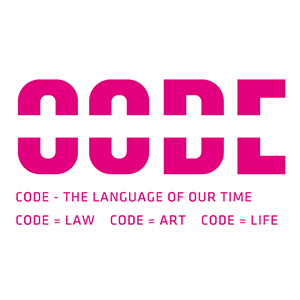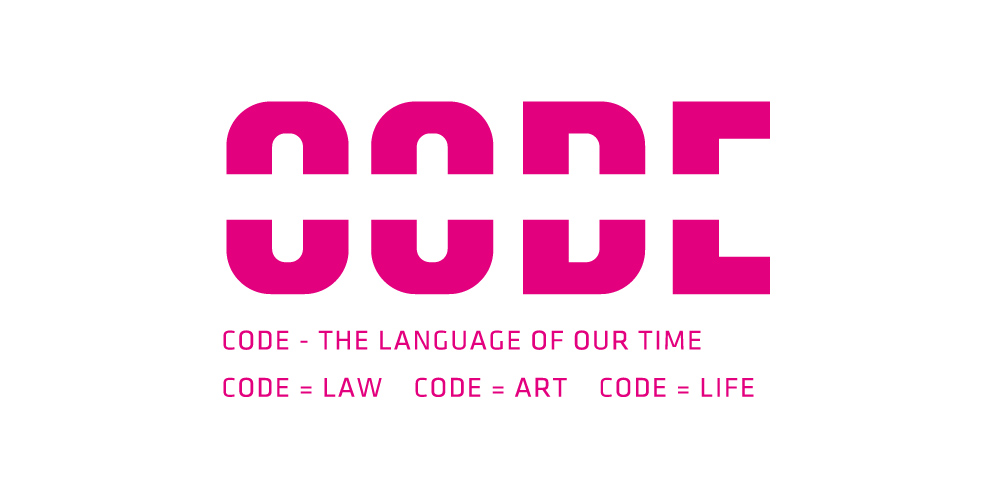
The opening of “CODE – The Language of Our Time” as well as speeches and workshops expanding on the exhibition’s theme will kick off the new “Ars Electronica in the Knowledge Capital” series on November 6, 2014 in Osaka. This discussion platform in the Grand Front Osaka—a veritable city within a city of 2.6 million inhabitants that is Japan’s third-largest metropolis—carries on the “Creative Cloud Osaka” program launched last year. The November lineup of guests includes Golan Levin, a pioneer of the interactive art genre, and Japanese art group exonemo.
A new feature this year: Each season is devoted to a highly relevant topic that Ars Electronica has treated at some point in the past. “CODE – The Language of Our Time,” the autumn theme in Osaka, takes up where the 2003 Ars Electronica Festivalleft off. We recently met with Ars Electronica Artistic Director Gerfried Stocker to jointly review the curatorial statement he composed 11 years ago and to discuss how his views on art and code have changed since he wrote it or in what ways they’ve remained the same.
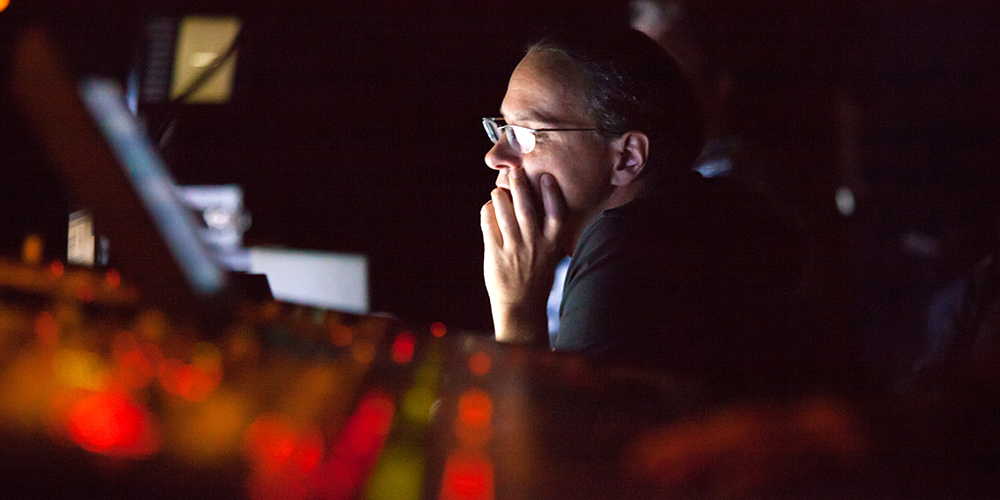
Gerfried Stocker during the 2014 Ars Electronica Festival, Photo: Florian Voggeneder
„The Internet is no longer a lawless, chaotic, disorganized no-man’s-land. It has long since become the target of substantial, systematic efforts aimed at rigorous regulation and control”, Gerfried Stocker 2003.
Would you like to add something to your statement, 11 years later?
Gerfried Stocker: The year 2003 was the moment when we were able to feel in a quite strong amount that business was really taking over the Internet. Of course, projects like Amazon or eBay already existed but especially in Europe this was not really visible. But at this time it was more and more clear that the interest to use the Internet as a business for its own created the situation that there was more and more a pressure and power to organize the Internet. This has shaped the impression of the Internet which many people had. Until then the Internet was more the place for computer nerds and outlaws – it was still a little bit like the underground. But to make business you have to do things. Just look at shops that surround us: You have to create a nice polished place where people feel safe and you have to establish certain rules that everybody understands. This is what started in 2003 and this is why we saw that it is important to think about what the rules behind this infrastructure are.
Now eleven years later, it is the case that we have the impression that the Internet is almost totally owned by business.
Nowadays we have difficulties to see that there are still a lot of areas and domains that are not occupied by business. Even the perspective has changed and maybe also the balance: now there is a huge amount of corporate space in the Internet and it is most visible because this is what the media is talking about when you read the newspapers, when you see magazines and watch television. Everything is about the big business – just think of Google or Uber, the fight against the new idea of organising taxi and transportation. Eleven years ago you mainly could read about this kind of uncertainty and all these hackers, computer freaks or adventurers. This is how the perspective has changed. We as Ars Electronica have to contribute now much more to get more visibility and attention to all these interesting cultural and educational communities. Because 2003 when we prepared the festival and its theme “CODE” it was also the time when we started to think about the digital communities category for the Prix Ars Electronica. This is one of the really important points now: to put more attention on this cultural and educational part of the Internet.
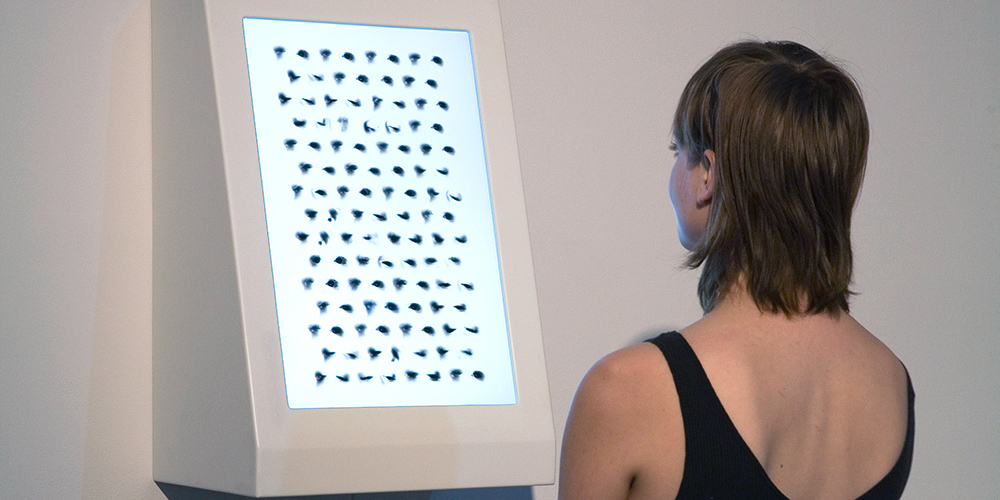
Eyecode by Golan Levin, Photo: John Berens
In the article of 2003 you asked yourself the rhetoric question if art is programmable and if software itself can be art. What would you answer today?
Gerfried Stocker: Software and code are very comparable to art. Art is also a form where you formulize something that is very abstract and at the end out of the subtraction you get a message, a story, an object, a piece of music and so on. I think this creation of something very tensible and real out of abstract matter, this is very characteristic for art and this is basically what writing code means. You have a big amount of abstract rules and codes and instructions. And then, if you are able to bind them in the right way you get something that has really an impact on real life. This comparison is why art is so interesting for understanding the world of code and software when suddenly something appears that is totally virtual and just exists as abstraction.
The crossing from virtuality to reality, this is a very interesting relationship between art and code.
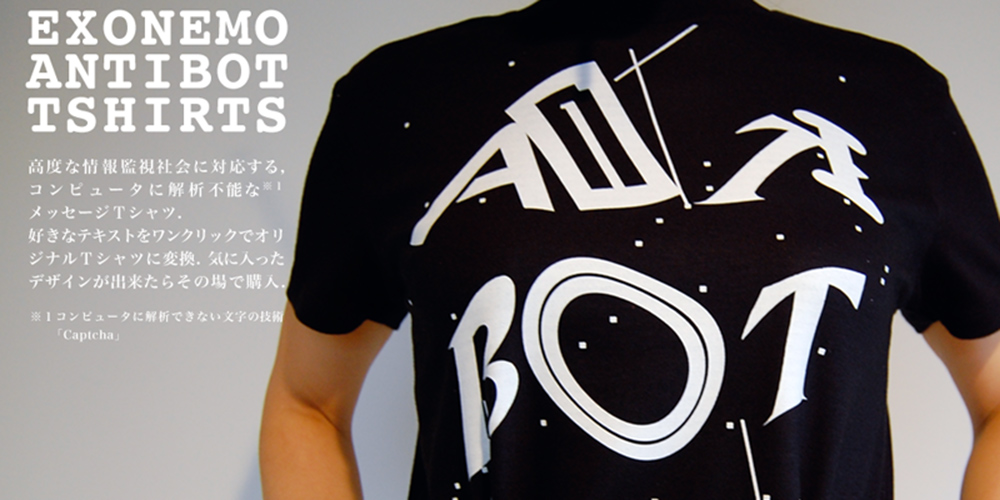
Antibot t-shirts by exonemo, Photo: exonemo
The “hot new fields” and expected sources of the key technologies of the 21st century, you wrote, will be bioinformatics, digital biology, in the wake of artificial intelligence and neurobionics. The first decade of the 21st century has passed now. Has your forecast been proved to be true?
Gerfried Stocker: It was not really a forecast, I think you can call it a forecast when you wrote about this in the 1970s. The intention of Ars Electronica is not to forecast things. Our way to work is to recognize what is already emerging or already there and rather starting to think about what will be the implication and the impact. I think it is quite important not to see it as a forecast. It was really clearly visible at this time in 2003, which is not so long ago. The first sheep was cloned in 1996, so the festival CODE was already seven years after “Dolly”. Even the Human Genome Project was even finished at this time, we had already people like Craig Venter becoming big rich entrepreneurs based on selling the code of the human DNA and building up business models with human DNA.
But of course nowadays we see the fields of bioinformatics, bionics or artificial intelligence are really becoming much much stronger. There have been many substantial breakthroughs in this last eleven years. Meanwhile, we have supercomputers like Watson able to win in Jeopardy game or all this kind of things. Especially when it comes to bioinformatics I think this is still an issue that is not fully recognized in public. But the needs for information technology, the needs for super computing, for fast storage and for high bandwidth to distribute the information, and the need that is coming from biotechnology are very strong. They have really huge amounts of power when we do the DNA analysis and so on. They really became a driving force in developing new software, in how to use artificial intelligence and in how to analyse all this data. It is still a very engineering and scientific area but it’s really a big thing.
What we also recognize more and more is that learning from nature and biological organisms how to organize information and how to interface with the environment is something that is increasingly becoming important in the development of computer technologies.
I think we are really at the beginning of this development, and probably we have to say that there is still much more to come. Nowadays we can see much much more possible applications and areas where the combination of digital code and biological code, of computer technology and biotechnology, is going to happen. Just think about the whole development of what we had in the past eleven years when it comes to bionic prosthesis. A lot of the stuff we are featuring at the Ars Electronica Center is now not just a kind of a strange scientific research project but it has become normal reality for patients to have electrodes implanted with their nerves to be able to control a robotic prosthesis or a robotic hand. All these ideas for this prototypes where out there already in 2003. This is why it is not a forecast and it can potentially be reality today for people like us.
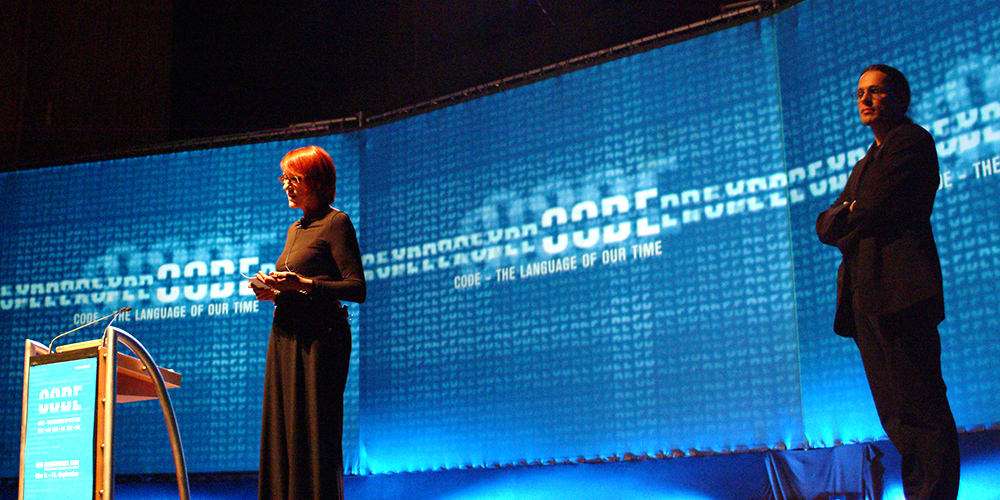
Already 11 years ago, the Festival Ars Electronica picked up the theme “CODE”. Photo: Sabine Starmayr
You’ve written that “digital codes are the materia prima of our modern, global Information Society”. How can art support the language of our time?
Gerfried Stocker: It is really the case that code is the materia prima, it is the raw material. The main important statement behind this code festival in 2003 was to really understand the way how to determent what is possible – by creating code.
The more powerful this technology and the machines are, the more powerful is also the code that drives these machines.
In 2003 you probably had 300 million people connected to the Internet, now we have 2.6 billion people on the Internet. And for all these people code defines what they can do with this technology. When you buy the latest gadget from smartphones or this kind of things or when you are working as a scientist with a super computer code defines how you can use this technology, how you can use it for yourself. The most important thing even more today than eleven years ago is this idea of competency being able not necessarily to write code. I think everybody, in school, they should learn how to write code. It’s not essential to become programmers but to be able to understand the power and the importance of code. Since this is not happening this is why need the works of art. They can compensate for the lack of experience in information and knowledge that the general audience does not have. Most of the people that use the Internet have no idea at all how code works. This is why we are now surprised about surveillance and things like this. If you understand a little bit about how code works and how software is made then we wouldn’t be so much surprised. We would have started much earlier to work against that. I think, art has an extremely important role to help us to understand how code is shaping and structuring our modern digital age.
The “CODE – The Language of Our Time” exhibition is running November 6, 2014 to January 25, 2015 at Knowledge Capital Osaka. The hours are 10 AM to 9 PM; admission is free of charge. Details are online at http://kc-i.jp/arsinkc/en/
